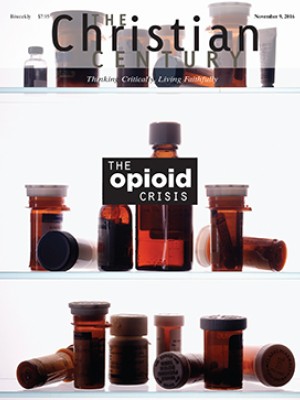Landmark Luther exhibits explore his technological and theological legacy
Three interconnected U.S. shows, taken together, represent the most extensive display of Martin Luther–related materials ever collected outside of Germany.
The exhibits run through mid-January. One at the Minneapolis Institute of Art focuses on the cultural and historical context of the Protestant Reformation. Another at Emory University in Atlanta examines the debates over law, grace, and salvation that animated Luther and his followers.
Word and Image: Martin Luther’s Reformation at the Morgan Library in New York City features an iconic portrait of Luther by his friend and neighbor in Wittenberg, the artist Lucas Cranach.
There’s also a wooden money chest used by Johann Tetzel, a Dominican friar who gained infamy for taking payments in exchange for granting indulgences, or remissions of punishment for sin.
But the centerpiece of the New York exhibit is a set of documents associated with Luther and his remarkable ability to communicate with the wider populace. There are his translations of the Bible from Latin into the German of the day, as well as Lutheran hymnals and Luther’s 1521 letter to Holy Roman Emperor Charles V, in which Luther stood by the theological views that were earning him both renown and powerful enemies.
Read our latest issue or browse back issues.
The real jewel is a single-page print of the 95 Theses that Luther nailed to the door of a Wittenberg church, one of just six contemporaneous copies in existence.
That even these few copies survive is a small miracle, said John McQuillen, who curated the exhibition. Wittenberg was a university town, and the church doors “were the bulletin board of the university,” he said, where it was standard practice to post a notice of a debate and the points that you wanted to argue.
“I don’t think it was this dramatic moment of the sound of the hammer ringing across Germany,” McQuillen said. “It was another day at the university, and another lecture to be held.”
No one knows if Luther actually posted a printed copy like the one on display here, or if it was handwritten. If it had been a written version, it would not have been considered worth saving, nor would it have survived. Handwritten copies were cast aside as a matter of course once a printed version was available; a written original was considered of no value until modern times, and no one at the time realized the impact that these 95 Theses would have.
Even these famed theses may not have been as important as the world has come to believe.
They were, after all, written in Latin and intended for a university audience of theologians. What really had an impact was a sermon on many of these same topics—indulgences and grace and corruption in the church—that Luther delivered a short time later and had printed up and distributed.
That sermon arguably had a much greater effect on the wider public and marked the start of Luther’s career as an astonishingly proficient writer, publishing a sermon or pamphlet or book on average every three weeks up until his death in 1546.
Movable type printing—invented in Europe six decades earlier by Luther’s fellow German, Johannes Gutenberg—was gaining steam as an industry, and Luther and the popularity of his ideas gave printers an enormous boost.
McQuillen stressed that the success of the Reformation was really the result of a kind of “perfect storm” of conditions as much as Luther’s theological concepts. Sentiment in Germany was already growing against the church’s corrupt practices, as was resentment that so much money was going to Rome instead of staying closer to home.
In addition, local princes were looking for more autonomy and were willing to protect Luther when the forces of church and empire were out for his head, a campaign that also brought Luther fame and more grassroots support.
But it was the combination of a new technology and a new theology—and, as McQuillen said, “someone who knew that message had to get out with little short texts that were very understandable to the average reader”—that made the difference.
Luther, working with Cranach and his shop of painters and engravers, was also able to distribute mass-produced woodcut images that mocked the pope or showed charity workers in a positive light.
“He took the message to the people: it is like 16th-century tweeting, throwing out these little pamphlets, these little single-page tracts, and almost poster prints of eye-catching woodcut illustrations,” McQuillen said.
It was as big a shift as the transition 1,500 years before Luther from scrolls to bound codex, and it changed the Western world, religiously, politically, and culturally.
“We are on a continuum of media; this is not something that was just invented with Facebook and Twitter,” McQuillen said. “We perpetually revisit the way that information gets out, how and what it is. And the fact that we are still dealing with the same problems and issues that they were dealing with 500 years ago is very telling to how important this subject matter is.”
Luther’s life “is almost ridiculously relevant today as to how a grassroots movement gets going and actually can change something,” McQuillen said. —Religion News Service
A version of this article, which was edited on October 24, appears in the November 9 print edition under the title “Landmark Luther exhibits explore his technological and theological legacy.”





